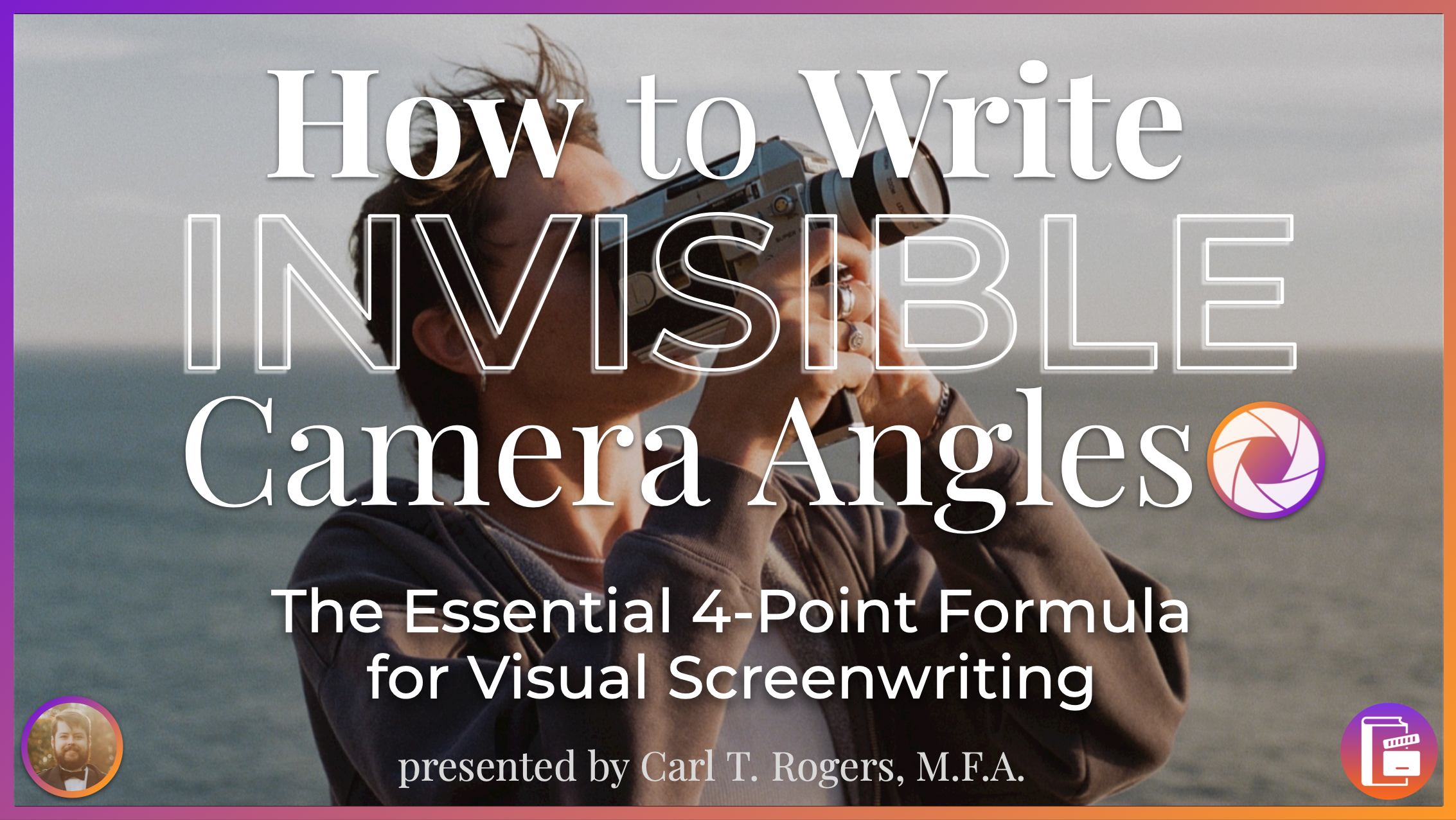Change Your Mindset About Screenplay Formatting
Roadblock. Afterthought. Annoyance. If those words come to mind when you think of screenplay format, then I have news for you.
“I just couldn’t get into your story. Your formatting was too awful.”
“I know you asked for feedback on your story and characters, but here are fifty-two typos I found instead.”
“Have you read Save the Cat? It’ll teach you literally everything you need to know about screenwriting.”
If you’re new to the world of screenwriting, chances are you’ve heard unhelpful comments like those above.
Getting constructive (or in some cases, not-so-constructive) feedback is par for the course for growing writers. However, when those notes relate to screenplay formatting, it’s often conflicting and therefore confusing. The struggle over script formatting can often feel at best like a needless distraction and at worst an enigmatic roadblock.
“I should focus on my story first,” you think. “Formatting is just an afterthought.”
In reality, properly formatting your script is part of the storytelling process. Excellent, well-crafted formatting is critical to success as a screenwriter for three reasons: professionalism, cinematic storytelling, and visual language.
Professionalism: How Your Script Looks
When it comes to screenplays, the book is unfortunately judged by its cover. In this case, it’s sometimes not even the first couple of pages of the script; the title page of your PDF file alone can telegraph to others if you know what you’re doing. That means even if your story is steller but your title page and script formatting are incorrect, you will appear to be an amateur.
Photo by Ben Rosett on Unsplash
Why? Most industry pros reckon if you can’t get the format right, your story will probably be, at best, mediocre. Script readers and producers have huge piles (metaphorically-speaking, in today’s digital age) of screenplays to read, and it ain’t worth their precious time if the formatting is shoddy. This is why proper formatting is so crucial — without it, you won’t even be able to get your foot in the door for them to experience your story.
Cinematic Storytelling: What Your Script Says
You may think the cinematic storytelling of screenplays is meant to envision how the finished film should look, including camera angles and carefully-framed compositions. Unless you are the director of the film, that’s not your job. Your job as the screenwriter is to tell your story in a way that can be felt and later visualized by other creatives. I’m a trained director (that was my MFA specialization) who writes scripts for myself to direct, and even I don’t write using camera angles. You shouldn’t either.
Photo by pawel szvmanski on Unsplash
Similarly, think of cinematic storytelling as essentially the process of mentally “editing” or “directing” the story before it has been shot. With a strong background in production, I will be the first to tell you that one of the best ways to train as a scriptwriter is by working in the editing bay.
To edit on the page, you use the tools of grammar and unique conventions of screenplay formating to expand and compress emotional beats in visual ways for others to experience as they read. Leave the camera angles to the pros. The sooner you embrace this, the sooner you’ll become an expert screenwriter.
Visual Language: How Your Script Speaks
Screenplay formatting might seem like a set of arbitrary rules to ensure that all screenplays look the same. That’s partially true, but it’s so much more than that. The screenplay format has been around long enough to evolve through the decades to become a sophisticated tool for telling visual stories. That’s why so much attention must be paid to the writing craft of formatting, some of which are:
Emotions Through Grammar
Proper Tense & Voice
Good vs. Bad Sentence Fragments
Invisible Camera Angles
Externalized Emotion
Photo by Annie Spratt on Unsplash
These skills are singular and can be difficult to master, especially for those with a creative writing background. Unlike the freedom in novels for verbose internal descriptions, scripts require both depth and intensity in as few words as possible. You must envision your story on paper in as pithy as possible in a subjective, external manner.
Summary
Formatting is paramount for how your script appears and reads. Formatting — or a lack thereof — drastically affects what your story says and how it says it. If you think screenplay format is a necessary evil or a pointless hurdle, change your mindset. When you embrace the nuance, you’ll become a better storyteller.
If you are dying to learn these more about these techniques and how to leverage them for your screenwriting career, then I encourage you to watch my free training below.
Watch my visual storytelling masterclass: How to Write INVISIBLE Camera Angles!




